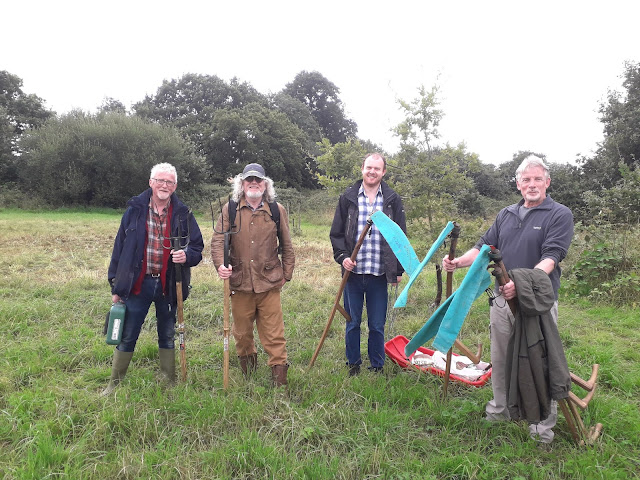News about seasonal changes at Filnore Woods and how to get involved as a volunteer, if you want to. As well as things seen and done at FILNORE WOODS, THE BLOG WILL INCLUDE THINGS YOU CAN SEE IN YOUR STREET OR GARDEN. To get regular updates, you used to be able to enter your email address in "FOLLOW BY EMAIL" (just below on the right) But this seems to have stopped working so GOOGLE 'FILNORE WOODS BLOG' AND FOLLOW 'FILNORE WOODS' ON FACEBOOK
Friday, 20 August 2021
MINT MOTHS
Tuesday, 17 August 2021
CHOKED BY AN OLD MAN
As you start up the slope towards the pylon at Filnore Woods, the hogweed and grass are pushing through a rather rampant ground cover plant.
Saturday, 14 August 2021
Thistle gall
Last Sunday five of us finished the job started in July, scything a section of the top meadow to promote wild flowers.
The cut grass, lying in windrows here, was raked up and stacked to prevent it from acting as a mulch to fertilise next year's grass. . . . .
Several of the thistles we cut had these swellings on the stem.
Wednesday, 11 August 2021
ROWAN BERRIES
Sunday, 8 August 2021
HOGWEED BONKING BEETLES
They are also called bloodsuckers but quite wrongly. Although harmless to humans they do feed on other insects especially aphids, who visit the hogweed and other flowers where they sit. And they also like pollen and nectar.
And why 'soldier beetles? They are part of a 40-strong group of beetles in Britain, with bright military style colours. Rhagonycha beetles are reddish orange on the head except for black eyes and antennae. The wing cases or 'elytra' are a more yellowy orange with a black tip at the back. The feet are also black but a tiny bit hard to see ! !
They are good flyers and whizz about in search of more food. They will even attack those black and yellow cinnabar moth caterpillars on ragwort.
Rhagonycha larva photo: bugguide.net
The brown larvae are also the gardener's friend, feeding at ground level on insects, slugs and snails.



























